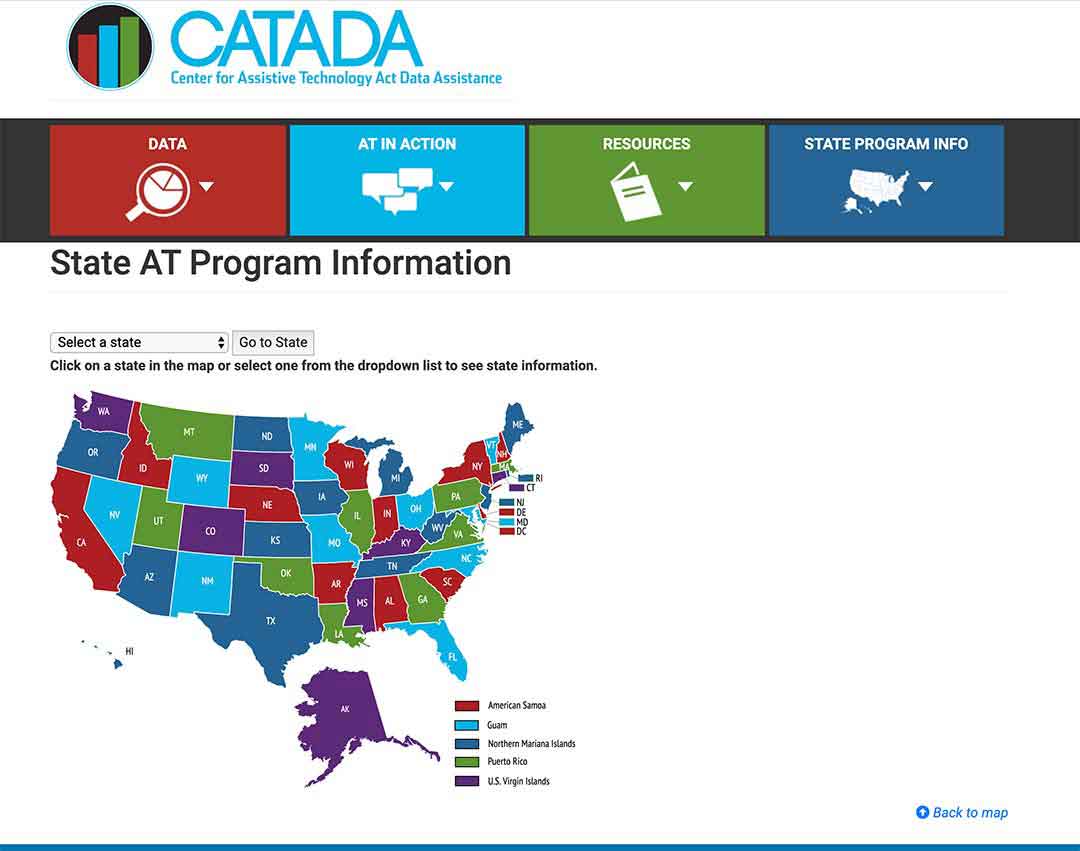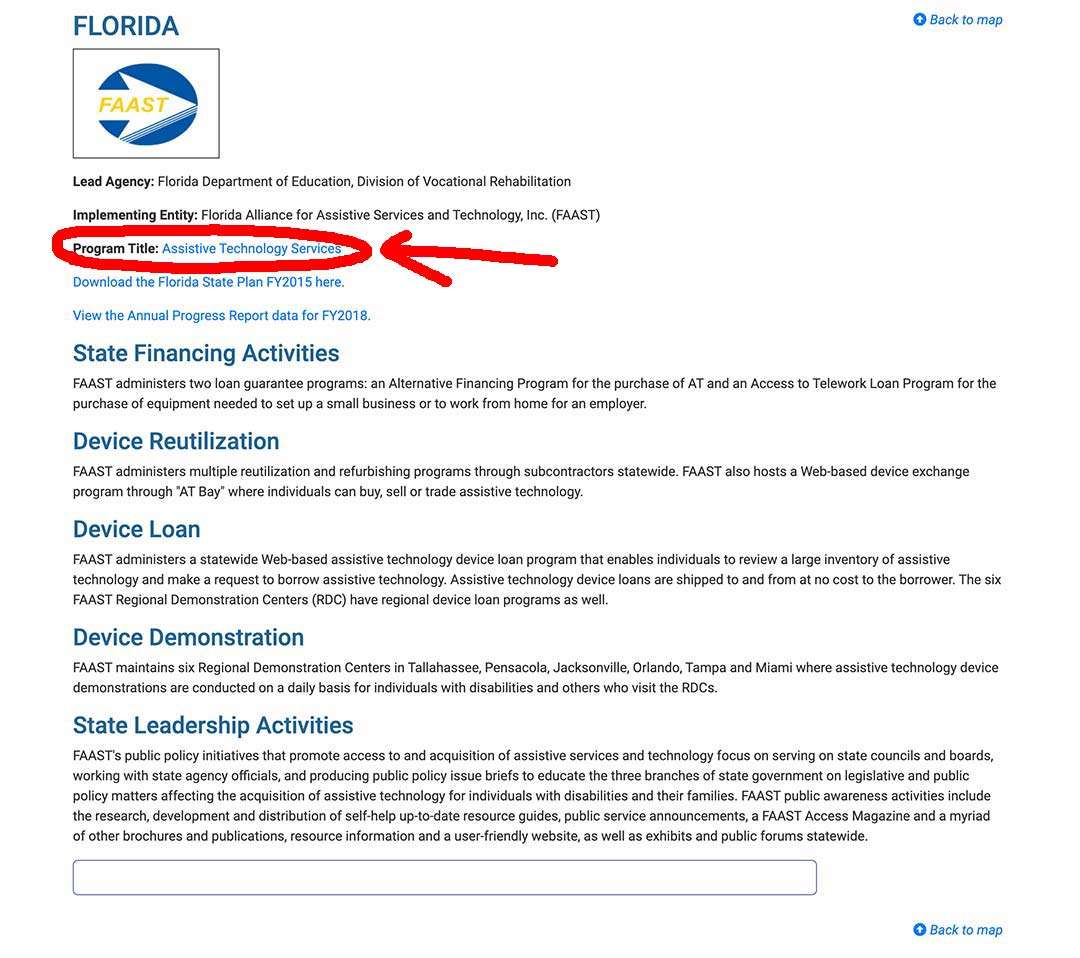A fall in the shower could be fatal for you, or your elderly parent, and a shower chair is an easy option for extra safety. With so many items needed for safety and caregiving, it can be difficult to find the money to pay for it all. And “Will Medicare Insurance cover this ?” is one of the first questions we ask.
Medicare Part B does not typically consider shower chairs as “medically necessary”, and so does not typically cover them for use in the home.
Medicare Part C, or Medicare Advantage Plans, are allowed to offer extra benefits, and may well offer coverage for a shower chair.
To get coverage for a shower chair, your doctor, who must be a Medicare-enrolled physician, is going to have to prescribe a shower chair for you.
To do this, your doctor is going to have to show how it is “medically necessary” – that it is going to help you with your care of a diagnosed medical condition.
Contents Overview & Quicklinks
Can a doctor prescribe a shower chair ?
Sample letter of medical necessity for a shower chair
Diagnosis/guidelines for a shower chair
Does Medicare cover bathroom equipment ?
What can you do with Medicare coverage in the bathroom ?
What equipment does Medicare pay for ?
Medicare-approved supplier near me ?
List of durable medical equipment typically covered by Medicare
How do you get durable medical equipment for the home through Medicare ?
What happens once you have a prescription ?
How do I pay the lowest amount for DME with Medicare ?
What about skilled nursing facilities ?
What happens if you have a Medicare Advantage Plan ?
Free assistance with understanding Medicare
Does Medicaid cover shower chairs ?
Medicaid and state funded programs which support people in their homes
How to find the HCBS programs, waivers and 1915 waivers in your state ?
What if your revenue is too high to qualify for Medicaid ?
Can a doctor prescribe a shower chair ?
If a Medicare-enrolled doctor has found that you have a diagnosed medical condition, for which a shower chair is “medically necessary”, and that you would benefit from using one, they can prescribe a shower chair.
Whether, or not, Medicare Part B agrees that it is, in their view, “medically necessary” is going to be another question, so it is not guaranteed that it will be covered.
Typically, shower chairs are not covered by Medicare Part B for use in the home.
Medicare Part C, or Advantage Plans, are different because they are run by private companies who have been contracted to provide at least the same services as Original Medicare, and can provide some extra benefits as well.
Sample letter of medical necessity for a shower chair
A letter of necessity is provided by your Medicare-enrolled physician and includes –
- your information
- your diagnosis
- the documentation supporting the diagnosis of your condition
- the item of DME for which you want coverage, along with its codes
- the reasons why this item is medically necessary
- how this item would benefit you
- the duration of the period for which the equipment is necessary
You can find lots of examples online of letters of medical necessity; you can see one here.
Diagnosis/guidelines for a shower chair
As I have said, Medicare Part B does not typically cover shower chairs, except for extreme cases where it is diagnosed as “medically necessary”.
Medicare Advantage Plans may be more likely to cover a shower chair, as they are allowed to offer extra benefits, above and beyond those offered by Original Medicare.
Some Advantage plans offer an allowance to buy certain pieces of equipment required by beneficiaries with chronic illnesses and which will help to either improve their condition, or help them to “maintain health or function”.
The Community Health Plan of Washington, has published outlines of the requirements of coverage for a Specialty bath/shower chair, on their website.
You can read that here.
In short, you have to –
- suffer from disability, or orthopedic condition, which makes it impossible for you to stand and shower, and for which you need seating support
- be unable to get in or out of the shower without assistance
- be unable to sit or stand in the shower without assistance
- have a home assessment to determine what is the best for your particular home situation
- have used the device or a similar one for a trial period, and that it was successful
Does Medicare cover bathroom equipment ?
Certain items that can be used as safety equipment in the bathroom are covered by Original Medicare Part B.
Walkers, crutches and commode chairs are all covered by Medicare Part B, and they can all be used in the bathroom to help with stability and safety.
Medicare doesn’t cover bath lifts, shower chairs, transfer seats or raised seats for the toilet, as it considers these to be “not primarily medical in nature”, but rather as “convenience items”.
That said, if you, or your loved one, qualify for a patient lift, this can be used in as a bath lift or shower lift, but you have to qualify under the Medicare Part B guidelines for a patient lift.
If you wish to know more about the Medicare guidelines for qualification for patient lift coverage, you can find that in either of my articles on Medicare and patient lifts, or Medicare and Hoyer lifts (these are a very popular brand, and the article, as well as explaining the qualification guidelines, also explains which of the Hoyer lifts are covered).
Medicare Advantage Plans are a little different from Medicare Parts A and B, as they are run by private companies.
The benefits allowed on Medicare Advantage plans have been increased. You can find out more in the section on Medicare Advantage below here.
What can you do with Medicare B coverage in the bathroom ?
My mom uses a walker sometimes instead of a grab bar to help her get in and out of the shower, as it can be re-positioned in so many ways.
Walkers can also be used as an aid to standing at a sink or in front of a bathroom mirror,
If your shower is large enough you may be able to put a 3 in 1 portable commode chair in it (only if it is waterproof – you need one which states that all the parts are waterproof), or a shower commode, which is just as easy to sit and wash on as a shower chair.
If you want to use a 3 in 1 bedside commode in the shower, and you want to know about the different types available, you can take a look at my article “Can a 3 in 1 commode be used in the shower ?” where I discuss the different commodes for the shower, including a type of commode called a “shower transport commode” which also doubles as a transport chair. There are also static shower commode chairs, but there are very few examples of these. The article has lists of examples of the different types and their weight capacities, so you can easily investigate.
If a 3 in 1 commode doesn’t fit in the shower, it is perfectly easy to sit on the commode chair outside the shower, and wash there – the commode chairs are portable and can be placed anywhere.
3 in 1 commodes come with side arms which give more stability when sitting down, and getting up – we have used ours in many situations with my mom, and to great effect.
3 in 1 commodes can also be placed over the toilet as a raised toilet seat, and can be placed without their seat as a toilet safety rail around your toilet.
If you want to learn about using bedside commodes over toilets, yes you’ve guessed it, I have an article about that too. In it, I take you through how to use certain types of bedside commodes over a toilet – “Can A Bedside Commode Be Used Over A Toilet ?”.
If you aren’t sure which type of bathroom safety equipment they require, I have an extensive article with 54 safety tips, that I have used over more than 11 years with my mom and dad, to make the bathroom a safer place. The article includes both practical tips, and certain products you may wish to look at. Just click here.
Or, if you are learning how to help, and you just want to make bathing easier for your parent you may be interested in this article here which is all about making the bathroom situation more comfortable, less stressful and safer.
What equipment does Medicare pay for ?
Original Medicare Part B will cover certain durable equipment for use in the home, if it is considered “medically necessary” – a decision which must be taken by a Medicare-enrolled physician, or treating practitioner.
Durable medical equipment is medical equipment which can be used in the home, and which is able to withstand repeated use for a sustained period of time.
Examples of durable medical equipment covered by Medicare are –
- wheelchairs
- hospital beds
- bedside commodes
- crutches
- back braces
Medicare does not cover all durable medical equipment, as some equipment is not considered “primarily medical in nature”, but rather for comfort.
Typical examples of this would be shower chairs and other bathroom safety equipment.
Medicare also does not cover any disposable medical supplies, unless you are receiving the Home Health benefit, or the supply is being used with a piece of durable medical equipment which is already covered.
Examples of disposable medical equipment which are not covered are –
- gauze
- fabric dressings
- disposable gloves
- face masks
For Medicare to consider an item of durable medical equipment for cover, it has to meet these basic criteria:
- Durable (needs to be able to resist repeated use over a sustained period of time)
- It is being used for a medical reason, as opposed to just for comfort
- Not usually useful to someone who isn’t sick or injured
- You must be using it in your home
- Generally has an expected lifetime of at least 3 years
So when searching for equipment, if it doesn’t meet these criteria, you probably won’t be able to get it covered by Medicare.
Medicare-approved supplier near me ?
To find a Medicare-enrolled supplier in your area you can use this link at Medicare.gov
List of durable medical equipment covered by Medicare
Air-Fluidized Bed
Alternating Pressure Pads and Mattresses
Audible/visible Signal Pacemaker Monitor
Pressure reducing beds, mattresses, and mattress overlays used to prevent bed sores
Bead Bed
Bed Side Rails
Bed Trapeze – covered if your loved one is confined to their bed and needs one to change position
Blood sugar monitors
Blood sugar (glucose) test strips
Canes (however, white canes for the blind aren’t covered)
Commode chairs
Continuous passive motion (CPM) machines
Continuous Positive Pressure Airway Devices, Accessories and Therapy
Crutches
Cushion Lift Power Seat
Defibrillators
Diabetic Strips
Digital Electronic Pacemaker
Electric Hospital beds
Gel Flotation Pads and Mattresses
Glucose Control Solutions
Heat Lamps
Hospital beds
Hydraulic Lift
Infusion pumps and supplies (when necessary to administer certain drugs)
IPPB Machines
Iron Lung
Lymphedema Pumps
Manual wheelchairs and power mobility devices (power wheelchairs or scooters needed for use inside the home)
Mattress
Medical Oxygen
Mobile Geriatric Chair
Motorized Wheelchairs
Muscle Stimulators
Nebulizers and some nebulizer medications (if reasonable and necessary)
Oxygen equipment and accessories
Patient lifts (a medical device used to lift you from a bed or wheelchair)
Oxygen Tents
Patient Lifts
Percussors
Postural Drainage Boards
Quad-Canes
Respirators
Rolling Chairs
Safety Roller
Seat Lift
Self-Contained Pacemaker Monitor
Sleep apnea and Continuous Positive Airway Pressure (CPAP) devices and accessories
Sitz Bath
Steam Packs
Suction pumps
Traction equipment
Ultraviolet Cabinet
Urinals (autoclavable hospital type)
Vaporizers
Ventilators
Walkers
Whirlpool Bath Equipment – if your loved one is home bound and the pool is medically needed. If your loved one isn’t home bound, Medicare will cover the cost of treatments in a hospital.
Prosthetic and Orthotic Items
Orthopedic shoes only when they’re a necessary part of a leg brace
Arm, leg, back, and neck braces (orthotics), as long as you go to a supplier that’s enrolled in Medicare
Artificial limbs and eyes
Breast prostheses (including a surgical bra) after a mastectomy
Ostomy bags and certain related supplies
Urological supplies
Therapeutic shoes or inserts for people with diabetes who have severe diabetic foot disease.
Corrective Lenses
Prosthetic Lenses
Cataract glasses (for Aphakia or absence of the lens of the eye)
Conventional glasses or contact lenses after surgery with insertion of an intraocular lens
Intraocular lenses
Important: Only standard frames are covered. Medicare will only pay for contact lenses or eyeglasses provided by a supplier enrolled in Medicare, no matter who submits the claim (you or your supplier).
How do you get durable medical equipment for the home through Medicare ?
To be able to get any DME covered by Medicare Part B for the home, you need –
- to be enrolled in Original Medicare
- to have a prescription signed by their Medicare-enrolled doctor stating that the equipment is medically necessary
- to get the DME through a Medicare-enrolled supplier
If you are claiming DME for your “home”, hospitals and skilled nursing facilities don’t qualify as a “home”, however they are covered under Medicare Part A (hospital Insurance).
A long stay care facility, such assisted living, can qualify as your “home” for Medicare Part B.
What does Medicare Part B consider to be a “home” ?
Medicare Part B considers the following to be a home –
- your own home
- your family home
- a living facility in the community, such as assisted living
What happens once you have the prescription ?
If Medicare agrees to cover the equipment, you still need to meet your annual deductible (if you haven’t already) and their co-payment of 20% of the Medicare-approved price of the equipment. Medicare Part B pays the remaining 80% of the Medicare-approved price.
Medicare will either buy, or rent, the equipment for you.
For cheaper items Medicare will normally purchase these, but in case of much more expensive items such as hospital beds, Medicare will rent the equipment on a monthly basis.
In the case of a rental by Medicare from a Medicare-approved supplier who accepts assignment, you will need to pay a monthly co-payment of 20% of the Medicare-approved rental price, and Medicare will pay 80% of the monthly rental.
You will also have to meet their annual deductible if they haven’t done so yet.
How do I pay the lowest amount for DME with Medicare ?
To get the coverage from Medicare Part B, and to pay the least amount, yourself, on any DME, once you have the prescription from a Medicare-enrolled doctor, you must make sure that you only purchase from a Medicare-enrolled “participating” supplier who accepts “assignment”. This way, you will only have to pay the 20% co-pay of the Medicare-approved price of the item in question, and their annual deductible if they haven’t yet paid it.
So, why is this the case ?
The reason is that Medicare-enrolled Suppliers fall into two camps, and it really can change the price you pay if you choose the wrong supplier.
The two camps are –
- Medicare Suppliers
- Medicare “Participating” Suppliers
The difference is that –
Medicare “Participating” Suppliers have agreed to accept what is called “assignment” – this restricts the supplier to only charging the Medicare-approved price for any Durable medical Equipment.
This means that when you buy your DME from a Medicare-enrolled “participating” supplier, you will be paying the least possible amount – 20% of the lowest possible price, plus their annual deductible if you haven’t yet met that.
If you don’t buy from a Participating supplier, what happens ?
Buying DME from a supplier who is Medicare-enrolled, but not a “Participating” Supplier, means your supplier accepts payment from Medicare, but isn’t obliged to accept “assignment”.
The outcome, for you, is that the supplier is allowed to charge up to 15% on top of the Medicare-approved price for the item.
Medicare will then pay the supplier 80% of the Medicare-approved price of the item, and the supplier will be asking you, to pay the difference between the Medicare-approved price, and their price for the item.
This payment is on top of paying the Medicare co-pay of 20% of the Medicare-approved price, and if you haven’t met it yet, your annul deductible.
Some states have legislation limiting the amount a supplier can add on to the price, such as New York State, where a supplier may only add on 5%.
What about skilled nursing facility residents ?
For those in hospitals or skilled nursing facilities, their Durable Medical Equipment is covered by Medicare Part A. The facilities are required to provide any medically necessary DME for up to 100 days.
What happens if you have a Medicare Advantage Plan ?
For the Elderly with Medicare Advantage Plans (Medicare Part C) it’s necessary to check with the plan provider to see if their shower chair is covered.
All Advantage Plans are offered by private Medicare-approved companies, and have to provide the same coverage and services as Original Medicare Parts A and B as a minimum, by law, and often cover more – but as of last year Medicare Advantage has been allowed to add some new benefits.
In 2019 the Centers for Medicare & Medicaid announced their plans to expand the coverage of Medicare Advantage and Part D –
Beginning in 2019, Medicare Advantage plans can now offer supplemental benefits that are not covered under Medicare Parts A or B, if they diagnose, compensate for physical impairments, diminish the impact of injuries or health conditions, and/or reduce avoidable emergency room utilization.
The text source – “CMS finalizes Medicare Advantage and Part D payment and policy updates to maximize competition and coverage” April 1, 2019. You can read the text here.
The new benefits can include equipment for individuals with chronic health conditions, and so some Advantage plans may offer coverage for certain types of bathroom equipment, such as grab bars.
You will have to scour the market to see which benefits Medicare Advantage plans are offering, and you must be aware, though, that Advantage Plan providers may require that any DME be purchased from a supplier in their network. If they don’t, they may be refused coverage.
Free assistance with understanding Medicare
SHIP – State Health Insurance Assistance Programs –
You can get free guidance about Medicare, Medicaid and Medigap from your state program.
Here is another article of mine explaining how to find your local SHIP – “Free Help Understanding Medicare And Medicaid ? Here’s Where You Get It”.
Does Medicaid cover shower chairs ?
The system for Medicaid funding for programs is both federal and state funding. The result is that there are hundreds of Medicaid programs and waivers across the states, and they can vary quite widely as each state decides where they wish to put their funding.
The elderly, the disabled, and low income families are the designated beneficiaries of Medicaid programs.
Medicaid, like Medicare, will also pay for “home medical equipment”, and very often covers 100% of the cost
To qualify for Medicaid coverage for “home medical equipment”, your loved one must be in –
- their own home
- their family home
- a group home
- an assisted living facility
- a custodial care facility
Medicaid and state funded programs which support people in their homes
The programs are called Home and Community Based Services (HCBS) Waivers, or 1915 Waivers.
Most program’s allow for a good range of DME, and some cover more items than Medicare.
Some HCBS programs, or waivers, allow for what is called Consumer Direction.
The beneficiaries are allotted a budget and financial planning assistance. The recipient can allocate the budget in the ways they wish to cover their requirements. This means that the recipient may use the budget to purchase DME.
Another program, Money Follows The Person, is for people who wish to leave nursing facilities, and to return to their homes, or to assisted living facilities.
The program will buy DME which are required for the individuals to do this.
How to find HCBS programs, waivers and 1915 waivers in your state
To find HCBS Waivers, 1915 Waivers, HCBS Programs and the Money Follows The Person Programs for seniors run by your state, just go to my article where I list what is available in each state, along with links to all the program websites. I have also listed all the PACE programs which are for All-inclusive care in the home – “Medicaid Home and Community Based Services Waivers and Programs For Seniors Listed By State”.
What if your revenue is too high to qualify for Medicaid ?
The Spend Down Program
Spend Down programs are designed to help a participant reduce their income, or income + asset level, so that they can become eligible for Medicaid.
To find out more about Spend Down you can read an article in which I explain who can qualify for Spend Down, the expenses that can be deducted and how to know if you qualify – “What is Spend Down ?”
What is the process for purchasing items of durable medical equipment on Medicaid and state funded programs and waivers ?
The first step is to get the doctor, or therapist, to write a medical justification letter which states that the items in question are “medically necessary”.
The next step is to contact a DME Medicaid-approved supplier, and to furnish them with the medical justification letter.
The DME supplier then has to fill out a Prior Approval application.
Next, the Prior Approval document goes to the Medicaid state office where it will be either approved, or denied.
If the application is denied, you will be notified as to the reasons why, and if you wish to, how to appeal the decision.
If a purchase is approved, the beneficiary will receive their item with nothing to pay.
To find your State Medicaid State Agency
If you want to discuss things with someone at your state Medicaid Agency, you can find it here.
Step 1 –
Click the link to Medicaid.gov and look for the section that I have outlined in red.

Step 2 –
Select your state and click on the button they have marked “GO” – it will take you to your State Medicaid Agency with all their contact info.

State Funding Assistance
Assistive Technology Programs
The US government gives all states what is known as the State Grant for Assistive Technology Program, which is to be used by the state to build its own State Assistive Technology Program to improve access to assistive devices in the home, with a focus on the disabled and elderly.
State Assistive Technology Programs have at least the following services –
- an online equipment exchange where state residents where people can register and post used assistive devices and medical equipment for sale, to donation or to exchange
- a main program website which coordinates the program’s activities, lists upcoming events and ongoing projects, answers the public’s inquiries, and registers people who are eligible and need help
- recycling, refurbishment and reuse centers which are either run by the state program, or community groups which they partner with, to provide free, or very low cost used equipment for disabled and elderly state residents
- most have loan closets as part of their program, which can be either long term or short term
Assistive Technology Programs can also register individuals who need help, and will contact them when specific equipment becomes available.
To find to more about your State Assistive Technology Program, go to their website.
To see what projects are in your state, click here.
Follow the steps below to see the projects in your state
Step 1/
Pick your state on the map or the drop-down menu, and click on “Go to state”
– I chose Florida for this example

Step 2/
Click on the link “Program Title” – for my example, I outlined it in red.

Step 3/
The AT Program state website will come up, and you can register, or use their contact info.

State Financial Assistance Programs
There are non-Medicaid State Financial Assistance Programs, in some states, designed to make it possible for the elderly and the disabled to live in their own homes.
The programs will pay for assistive devices, safety equipment, durable medical equipment, and home remodeling, such as bathroom modifications, wheelchair ramps and kitchen modifications, with grants, loans or a combination of the two.
Contact your local Area Agency on Aging to find out if your state has any programs for the elderly.
Financial assistance for Veterans for a shower chair
For veterans, the Department of Veterans’ Affairs has different grants, programs and forms of financial assistance, which will cover the cost of items needed in the home.
Veterans receive healthcare under the VA Medical Benefits Package.
In the case of veterans, the law provides that the VA has to give eligible veterans hospital care and outpatient care services, which are defined as “needed.” The VA defines “needed” as “a care, or a service, which promotes, preserves or restores health”.
You can find out about their local VA Medical Centers, clinics and offices in each state here.
Below are some different forms of financial assistance for veterans and their families –
- Tricare for life
- Tricare
- Veterans Directed Home and Community Based Services – programs which have been designed to help veterans to stay in their own homes
- ChampVA for Life
Summary
Even though you can’t get shower chairs covered by Medicare Part B, you may be able to get them covered if you have a Medicare Advantage plan.
If your shower is large enough, Medicare does cover commode chairs if they are “medically necessary”, and if you can get a portable commode, shower commode, or shower transport commode, they are just as stable as a shower chair.
There are also possibilities of getting shower chairs with –
- Medicaid state HCBS programs, waivers and 1915 waivers
- non-Medicaid State Financial Assistance Programs for the elderly
- State Assistive Technology Projects
- VA Medical Benefits Package
I’m Gareth, the author and owner of Looking After Mom and Dad.com
I have been a caregiver for over 10 yrs and share all my tips here.

